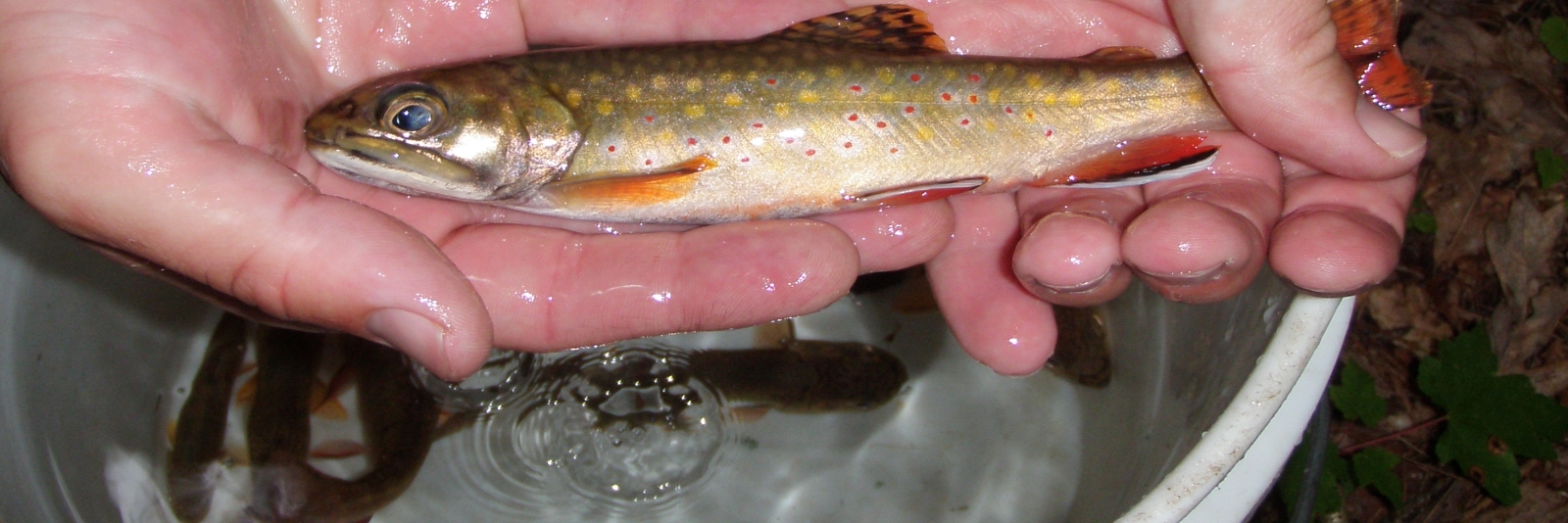Monitoring & Protection Program
The Commission’s Monitoring and Protection Program consists of two sections-the Monitoring & Assessment (M&A) section and the Restoration & Protection (R&P) section.
In the M&A section, aquatic biologists monitor water quality, assess biological communities, and evaluate habitat throughout the Basin. In the R&P section, environmental scientists conduct water quality studies focused on targeted issues of importance within the Basin. Scientists from both sections work jointly with many agencies and organizations in efforts to evaluate, protect, and restore the water resources of the Susquehanna River Basin.
For further information, please see the following:
Projects and Initiatives
American Eels: SRBC has worked with natural resource agencies and dam operators to restore eels in their native waters. The Commission's Eels in the Classroom project is an environmental education program that provides juvenile American eels to educators to raise in their classrooms and ultimately release back into the Susquehanna River.
Chesapeake Bay Watershed Region Freshwater Mussel Partnership: The Partnership is a voluntary alliance of stakeholders who share a common interest in freshwater mussels. Our goal is to advance and promote Conservation & Restoration efforts while evaluating best management practices for Water Quality. We aim to reduce excess nutrients and sediment in tributaries that flow into the Bay.
Chiques Creek Restoration Initiative: The Commission is partnering with the Pennsylvania Department of Environmental Protection, the Penn State Agriculture and Environment Center, Lancaster County Conservation District, local municipalities, and many other interested stakeholders to collaborate on an innovative approach for achieving water quality improvements in the Chiques Creek Watershed, Lancaster and Lebanon Counties, Pennsylvania.
Continuous Instream Monitoring (CIM): Established in January 2010, the CIM continuously measures and reports water quality conditions throughout Pennsylvania and New York.
Susquehanna River Basin's Early Warning System: The Early Warning System was designed to help protect the Basin’s water supply by minimizing the impacts from contaminant spills and improving day-to-day operations for public drinking water suppliers.
Flow Monitoring Network: This network was established in 2012 at 19 stations in Pennsylvania and New York to study water flow, habitat, water quality, and aquatic communities during the natural low flow period from June through September.
Large River Assessment: This project assesses the aquatic ecosystems of the Basin’s large rivers, including the Chemung, Juniata, and West Branch Susquehanna Rivers as well as the mainstem Susquehanna River.
Lower Susquehanna River Source Water Protection Partnership: This Partnership was formed in 2012 by water agencies, water suppliers, non-governmental organizations, and others, to improve efforts to help protect sources of drinking water supplies from pollutants on a regional scale.
Mine Drainage Program: This program implements mine drainage assessment, planning, and remediation projects on mine drainage issues located throughout the Basin.
Sediment and Nutrient Assessment Program (SNAP): This program has a network of 26 sites that are part of the Chesapeake Bay Program’s Non-Tidal Water Quality Monitoring Network.
Subbasin Surveys: Beginning in the mid-1980s, each of the Basin’s six subbasins have been surveyed on a rotating basis. These surveys involve the broad, routine assessment of water quality, habitat, and aquatic communities at targeted sites within each subbasin. More intense sampling focusing on a particular issue or region within that subbasin have occurred in the year after the routine sampling.
